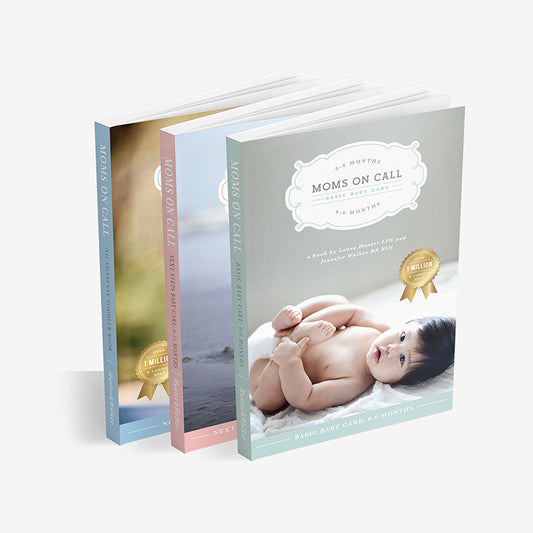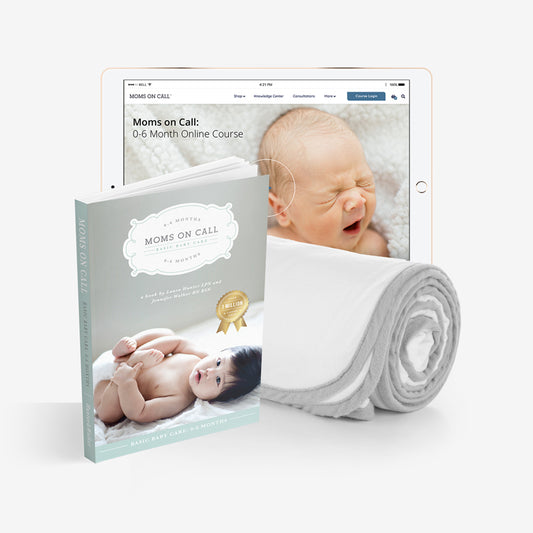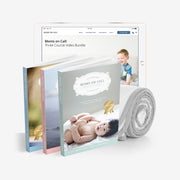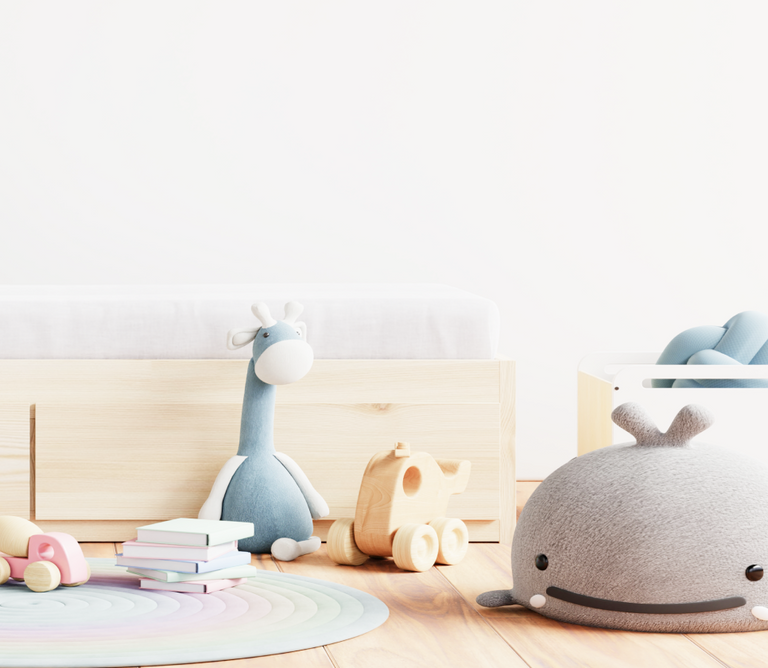Most new moms are excited to feed their newborns, but it can also be overwhelming and intimidating. Bottle feeding is definitely a learning experience that takes some practice – especially when trying to make sure you’re using the correct positions for your baby’s comfort and safety! Don’t worry, though – if you pay attention to just a few key principles, bottle feeding doesn’t have to feel so daunting. We will explore proper bottle-feeding positions so you can easily provide comfortable nutrition for your little one.
Attention New Parents of Preterm Babies:
Did you know that most babies born before 36 weeks may not show signs of readiness to feed by mouth? It’s common to see premature and late preterm infants with a nasogastric (NG) tube, which allows for the safe feeding of breast milk or formula directly to their tummy. Don’t worry. This is a common and normal practice to ensure your baby gets the nutrition they need.
As your baby nears their due date and becomes “term” (around 36-37 weeks), we evaluate their feeding ability with a bottle. By offering small amounts of milk on a pacifier, we help them learn how to suck, swallow, and breathe properly. We even offer preemies a cotton swab with breastmilk to familiarize them with the taste. However, this process does more than just introduce them to the taste of milk; it provides us with valuable information about their readiness to feed. Rest assured. We’re here to support your baby every step of the way.
Correctly Bottle-Feeding Your Baby
Feeding your baby can be a challenging experience, but with careful observation and a little help, it can also be a rewarding one. It’s important to take note of your baby’s interest in feeding, making sure they’re neurologically ready to take a bottle. It’s also important to read their cues and pay attention to any negative associations they may have with oral stimuli. For example, preemies who have had a breathing tube for a long time may have developed negative associations with pacifiers or bottles. Additionally, babies suffering from painful reflux may associate feeding with pain.
Other important factors to consider are whether your baby becomes overwhelmed during feeding, such as becoming sleepy at the bottle, breathing rapidly, or dropping their heart rate low. Babies who stick their tongues out and push the bottle out may also need a little extra help with the coordination skill of suck, swallowing, and breathing.
Rest assured that with patience, attention, and the right support, your baby will eventually master these skills and grow into a healthy, happy infant.
Discover the important cues your baby is giving you while feeding by simply looking and listening. Whether they’re showing signs of hunger, fullness, or discomfort, such as oral aversion or reflux, observing your little one can provide valuable insights. Trust yourself and keep a watchful eye on your baby during feeding times.
Bottle-Feeding Q&A
My baby isn’t a preemie. Do I still need to watch them closely while they feed?
Bottle feeding is an important skill that your term baby needs to learn. It’s essential to follow your baby’s cues for feeding, but positioning the bottle correctly is equally important for their health and development. In this article, we’ll explore the reasons why proper bottle-feeding positioning matters. Rest assured that following these guidelines will help promote healthy feeding habits for your little one.
Why is it so important to know your baby’s feeding cues while bottle feeding?
Understanding your baby’s feeding cues is essential for a positive feeding experience. It not only tells us if the baby needs to slow down or speed up the pace but also helps us determine if they are full or still hungry. The amount that they take in is more important than trying to feed all the contents of the bottle. It also prevents overfeeding and allows the baby to control the pace of the bottle.
Recognizing if the baby is overwhelmed or done with the bottle is crucial in preventing oral aversion and refusal to eat by the bottle. Signs like sneezing, yawning, or pushing out of the tongue indicate that the baby may be feeling overwhelmed. You can prevent forceful feeding by gently tickling their upper lip with the bottle to allow them to open before latching. Remember, by listening to your baby’s cues, you can create a positive feeding experience for both of you.
My baby hasn’t shown any of these things and feeds just fine the way I feed her.
As a parent, you have the power and authority to make decisions for your baby’s well-being. We are here to provide you with helpful information and guidance on preventing or reversing any negative effects of bottle-feeding positions caused by gravity. You are not alone in this journey, and we are here to support and encourage you every step of the way. Together, we can ensure your baby’s optimal health and comfort.
Does positioning matter if the contents are formula or breast milk?
No! Anytime you bottle feed, no matter the contents, side-lying is the way to go.
What position is best?
SIDE LYING POSITIONING + INCLINED!
What is side-lying + inclined positioning?
Side-lying positioning is when the baby is lying on their side (ear, shoulder, and hip should all be aligned). Then, incline their head slightly with your hand or a pillow (We even suggest crossing your legs!).
Why is side-lying + inclined to feed important?
Side-lying + inclined to feed mimics breastfeeding – both in position and flow. It allows the baby to control the flow of the bottle, leading to a positive experience with the bottle, less choking and coughing, less flooding, and fewer ear infections.
When it comes to baby bottles, one thing to keep in mind is that the opening at the nipple is always open, whether your little one is suckling or not. To test this, simply turn the bottle upside down – you’ll notice it continues to drip even when not in use. This means that when you hold the bottle in a downward position, such as when feeding your little one in the “crook of the arm” position, the milk will naturally be pulled out by gravity and can cause dripping in your baby’s mouth. But don’t worry. This is completely normal, and the bottle is functioning properly.
Did you know that when your baby drinks from a bottle, gravity is always at play?
As milk flows downwards towards the baby’s mouth, it can cause them to get more milk than they can handle at once. This can leave your little one feeling overwhelmed and can lead to coughing, choking, and even milk dripping out of their mouth. This can happen when using the “crook of the arm” positioning, where the nipple is angled downwards, allowing gravity to take over. But don’t worry! By adjusting the angle of the bottle, you can help regulate the milk flow and prevent these uncomfortable and sometimes dangerous situations.
Imagine trying to drink through a straw while someone is simultaneously pouring liquid into your mouth. It’s a challenging situation for anyone to keep up with, right? Well, babies experience a similar struggle when it comes to feeding. If they consistently receive more milk or formula than they can handle, they can become overwhelmed and start to develop a negative association with feeding time. Ultimately, this can lead to feeding difficulties for them.
How do I feed the baby in a side-lying position?
- Bend your knees and elevate your legs on a coffee table or ottoman. If you don’t have those available, cross your legs or place a pillow on your lap.
- Place the baby in a side-lying position on your lap with their head closest to your knees.
- Support the baby’s head and neck with your non-dominant hand.
- Hold the bottle parallel to the floor.
- Feed the baby.
I see air in the nipple. Should I be concerned?
No. Air at the top of the nipple is normal – the milk still fills the tip of the nipple, so the baby won’t suck in the air.
My baby is gulping and choking on the bottle. What can I do?
Your baby may need a smaller size nipple. If you’re already using the smallest size, try paced feedings. Paced feedings allow babies to “catch up” and swallow the milk in their mouth, then breathe, then suck. Too much milk will cause them to gulp, not be able to take a breath, etc.
My baby gets frustrated at the bottle, and when I take the bottle out, the nipple is completely flat and collapsed.
Time to move up to the next size nipple! Baby is sucking harder than the nipple flow allows.
It takes forever for my baby to feed from the bottle (more than 45 minutes). What can I do to help?
Try upsizing the nipple! If the baby is dripping, gagging, or choking, the flow is too fast, and try moving down a nipple size.
My breastfed baby will not take a bottle. Please help!
Review your Moms on Call Basic Baby Care book and Online Course for guidance and demonstrations. Moms on Call’s all-time favorite bottles are the classic NUK First Essentials. (You do not need breast-like nipples for bottle feeding!)
Need more support?
With each and every Moms on Call Consulting experience, we have one goal in mind—to equip you with the confidence you need to become the best parent possible for your child. We are proud to partner with Certified Consultants who are uniquely trained to work with families utilizing the Moms on Call philosophy. All consultants are licensed nurses with pediatric experience who have used Moms on Call within their own homes. Book your personal consultation with one of our Premier Certified Moms on Call Consultants!
























